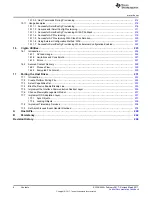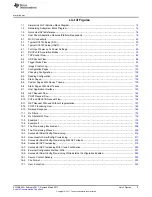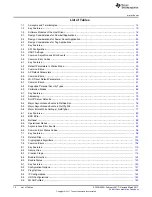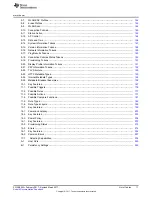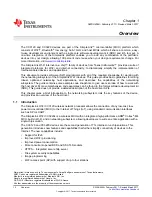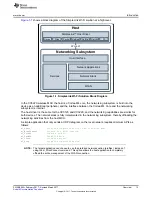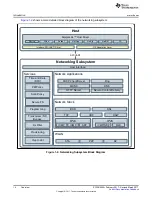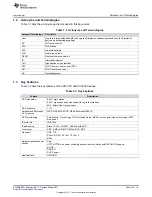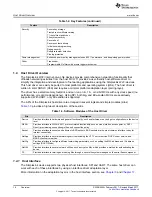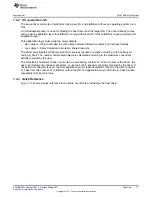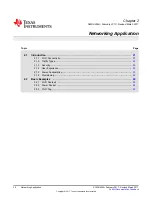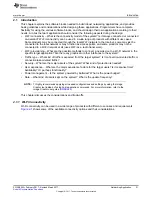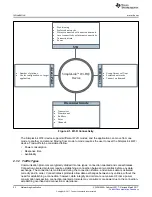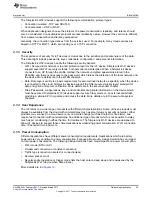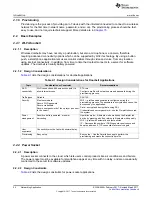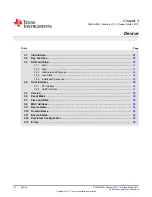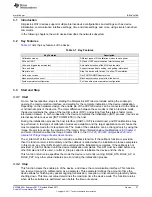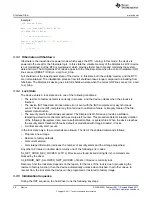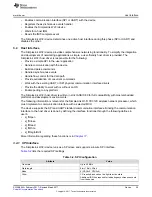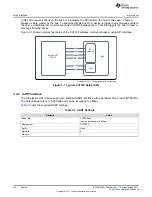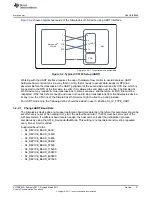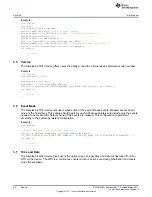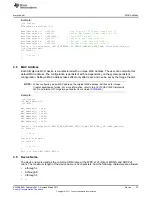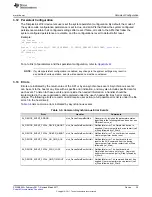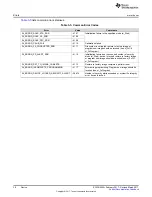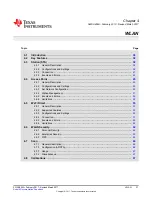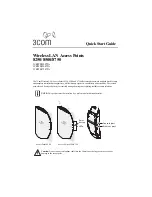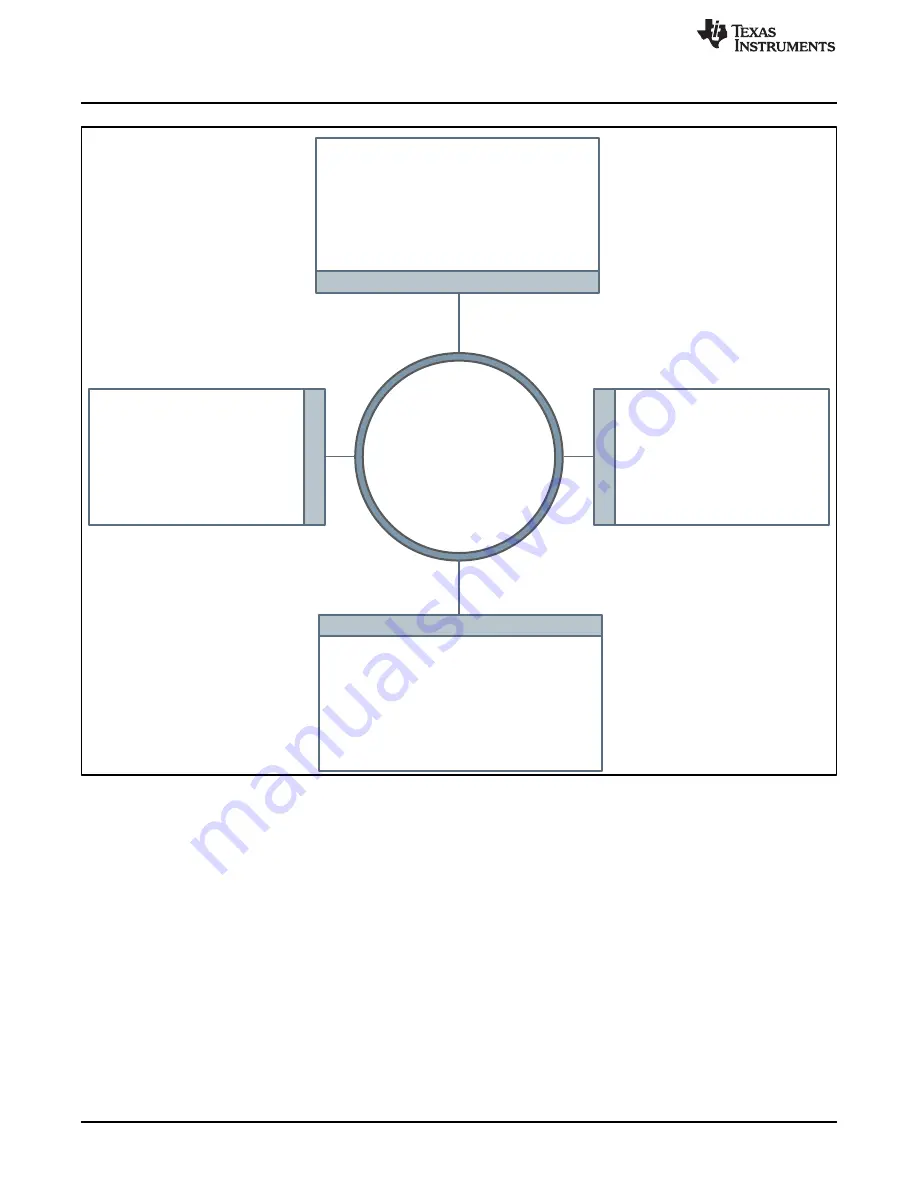
x
Provisioning
x
Preferred networks
x
Always connected vs Connect on demand
x
Local connectivity vs Internet connectivity
x
Connection time
x
Power
x
Number of stations
x
Use for configuration vs. target
application
x
Group Owner vs Client
x
Preferred networks
x
Connect on demand
x
Transceiver
x
Promiscuous
x
Rx filters
x
Rates
x
Channels
‹•’Ž‡ ‹••
;
‹
-Fi®
Device
STA
W
iF
i
D
ir
e
c
t
Disconnect mode
A
c
c
e
ss
P
o
in
t
Introduction
22
SWRU455A – February 2017 – Revised March 2017
Copyright © 2017, Texas Instruments Incorporated
Networking Application
Figure 2-1. Wi-Fi Connectivity
The SimpleLink Wi-Fi device supports different Wi-Fi modes, and the application can move from one
mode to another on demand. Moving from mode to mode requires the user to reset the SimpleLink Wi-Fi
device. Trade-offs to be considered follow:
•
Power consumption
•
Response time
•
Availability
2.1.2 Traffic Types
Communication protocols are typically divided into two types: connection oriented and connectionless.
Connection-oriented protocols require establishing a connection between two entities before any data
exchange. The connection is maintained during the connection lifetime, and ensures data is delivered
correctly and in order. Connectionless protocols allow data exchanges between any entities, without the
need for establishing a connection; however, data integrity and order are not ensured. From a power
consumption perspective, connection-oriented protocols may consume more power due to the connection-
establishing overhead and connection maintenance.

